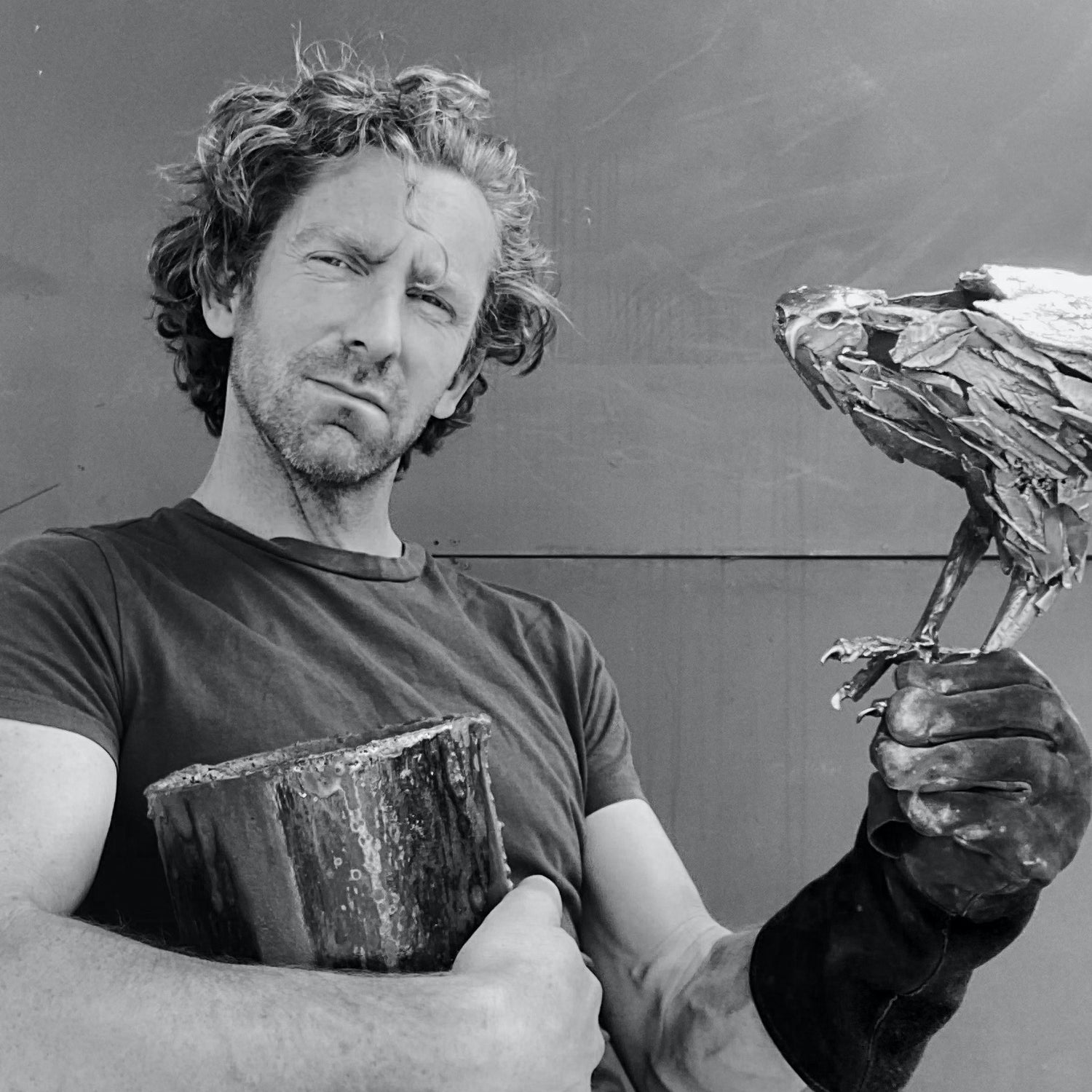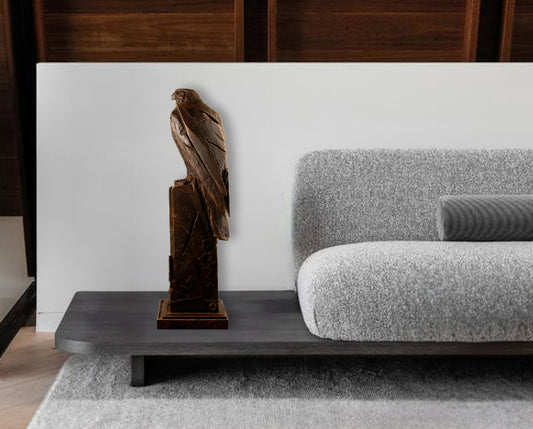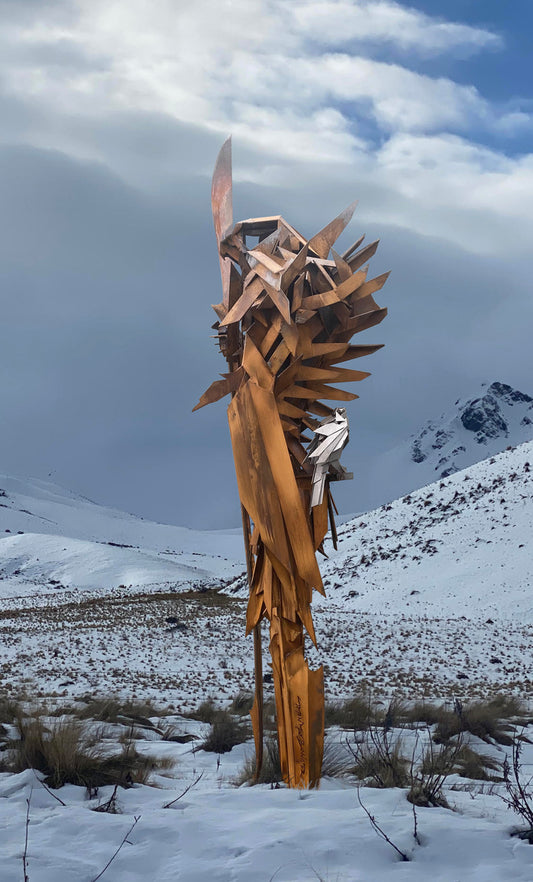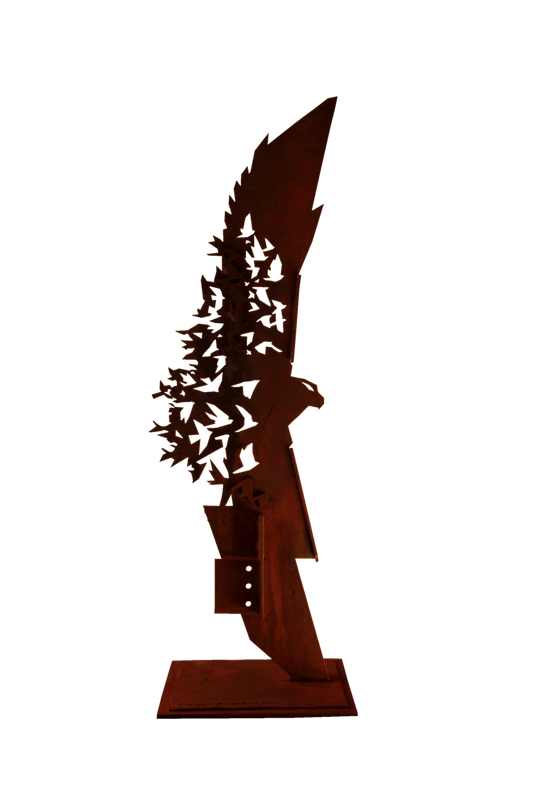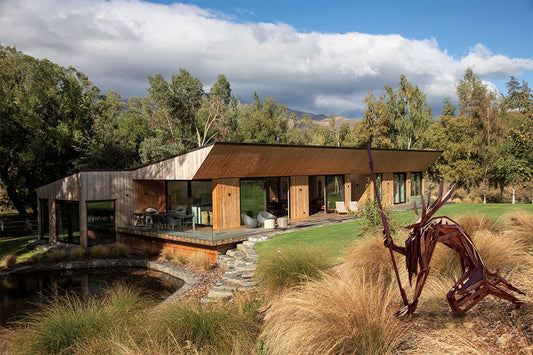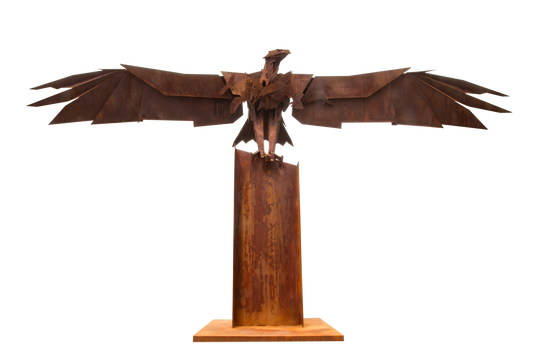Simon Max Bannister
Simon Max Bannister, born and raised in South Africa, moved to New Zealand after being captivated by the dramatic beauty of the land, its people, and the profound reverence for nature. In his artistic practice, Bannister employs a distinctive bronze casting technique to express his concerns about habitat and species loss. Working predominantly with wood and metal, he creates ephemeral sculptures that poignantly reflect the precarious state of nature.
In his smaller bronze sculptures, Bannister assembles wood splinters, resembling feathers, bone, and sinew, collected from sawmills frequented by him. Utilizing a unique lost cast technique, he uses these wooden fragments to construct indigenous birds, nests, and wings. The incineration of these shapes becomes the mould for the final bronze sculpture, immortalizing species that hold deep significance for him.
Bannister’s large steel sculptures, encouraged to naturally oxidize, exude a warm patina rich in earthy ochres, reflecting a sense of time and place within the elements. The initial form is meticulously moulded and then incinerated in a kiln. Casting bronze into the resulting negative space creates a unique replica of the original work, symbolizing the cyclical nature of life. His sculptures come to life after refining the concept down to essential sketch marks, which serve as the backbone for the large armature, onto which additional characters and details are added.
Bannister’s unique bronze work, blending wood and metal, carries a powerful essence that captures both the eye and the heart. His bird forms, crafted with a splintered language, delicately capture the character and fragility of each species. Each sculpture serves as a respectful tribute to natural beauty and a poignant reminder of the imperative need to preserve it.
In his steel outdoor pieces, Bannister integrates industrial elements, transforming iron into wilder themes like skeletal armatures, nests, wings, feathers, and branches. These sculptures embody his passion for the reclaiming power of nature and belief in its restorative abilities. Positioned as guardians of the land, he hopes these artworks bring bold attention to the larger environment as they seamlessly integrate into the landscape.
 Sold
Sold
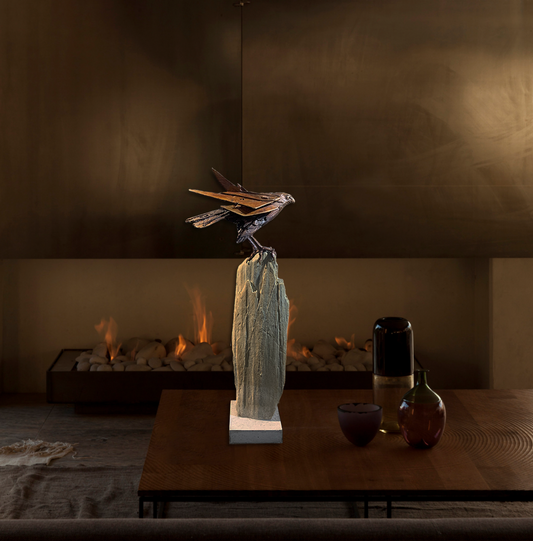 Sold
Sold
 Sold
Sold
 Sold
Sold